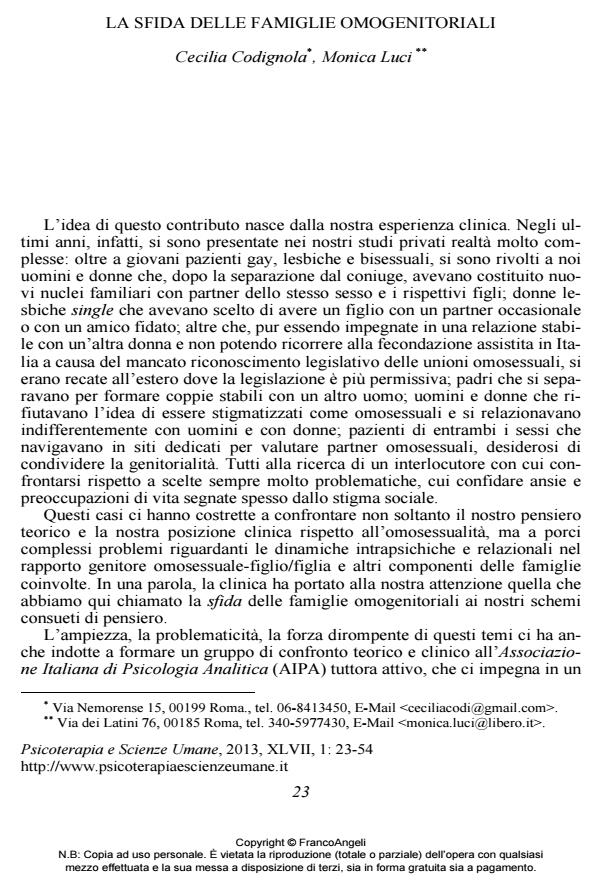La sfida delle famiglie omogenitoriali
Titolo Rivista PSICOTERAPIA E SCIENZE UMANE
Autori/Curatori Cecilia Codignola, Monica Luci
Anno di pubblicazione 2013 Fascicolo 2013/1
Lingua Italiano Numero pagine 32 P. 23-54 Dimensione file 166 KB
DOI 10.3280/PU2013-001003
Il DOI è il codice a barre della proprietà intellettuale: per saperne di più
clicca qui
Qui sotto puoi vedere in anteprima la prima pagina di questo articolo.
Se questo articolo ti interessa, lo puoi acquistare (e scaricare in formato pdf) seguendo le facili indicazioni per acquistare il download credit. Acquista Download Credits per scaricare questo Articolo in formato PDF

FrancoAngeli è membro della Publishers International Linking Association, Inc (PILA)associazione indipendente e non profit per facilitare (attraverso i servizi tecnologici implementati da CrossRef.org) l’accesso degli studiosi ai contenuti digitali nelle pubblicazioni professionali e scientifiche
L’omogenitorialità lancia una sfida non solo ai nostri canoni culturali e al nostro immaginario sulla famiglia ma anche a molti concetti e teorie psicoanalitiche, che mostrano un particolare ritardo su questo tema. Fino agli anni 1990 le teorizzazioni freudiane e junghiane hanno assunto una posizione essenzialista sulle identificazioni che compongono il genere el’orientamento sessuale, semplificando eccessivamente la spiegazione del percorso che porta alla scelta omosessuale. Le norme culturali prevalenti sono state così avallate nei concetti di "salute" e "malattia", con conseguenti pregiudizi anche sulla genitorialità omosessuale. Occorre ripensare alle dinamiche consce e inconsce che compongono l’identità di genere, e studiare cosa avviene quando più padri e più madri si alternano nella cura del figlio e la divisione tra generi appare più fluida. Questi temi vengono discussi anche tramite una revisione della letteratura scientifica sull’omogenitorialità.
Parole chiave:Omogenitorialità, omosessualità, pregiudizio,identità di genere, LGBT
- Un punto di vista sull'omogenitorialità, in particolare quella del maschio singolo Paolo Pietro Stramba-Badiale, in RICERCA PSICOANALITICA 2/2018 pp.75
DOI: 10.3280/RPR2018-002005 - Sposarsi. Sugli effetti dell'esclusione da un diritto umano elementare Nicola Carone, Vittorio Lingiardi, in RIVISTA SPERIMENTALE DI FRENIATRIA 2/2014 pp.85
DOI: 10.3280/RSF2014-002007
Cecilia Codignola, Monica Luci, La sfida delle famiglie omogenitoriali in "PSICOTERAPIA E SCIENZE UMANE" 1/2013, pp 23-54, DOI: 10.3280/PU2013-001003